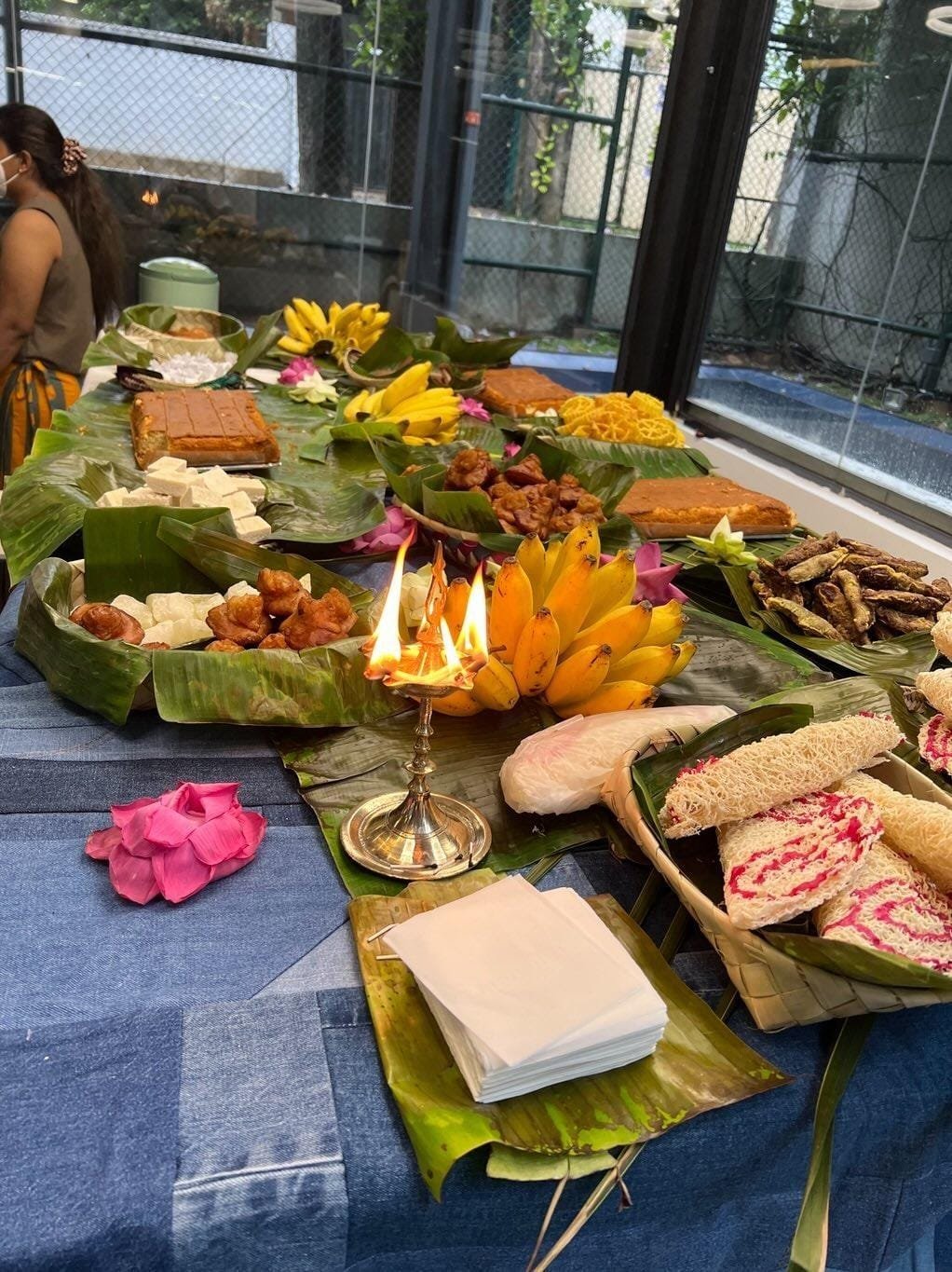Sinhalese and Tamil New Year Festivities in Sri Lanka
In Sri Lanka, the New Year celebrations, Aluth Avurudu (Sinhala) and Puthandu (Tamil), are celebrated on April 13 or 14, when the sun moves from the house of Pisces to the house of Aries. Also known as the Sun Festival during Bak, “Times of Plenty,” the Sri Lankan new year coincides with harvest, and therefore, colourful fruit from trees are collected in bulk to fuel the week-long celebrations.
New Year Fruit Offering. Image by Ruwanti Gajadeera
The new year's rituals combine indigenous, astrological, Hindu, and Buddhist traditions. Each year, astrologers designate specific times to perform the major rituals during the holiday season:
Bath Time: A bath is taken before the start of the new year to wash away the tribulations of the year gone by.
Transition time: Punya Kalaya is the transition period between the end of the new old year and the start of the new. During this time, people refrain from their day-to-day activities and perform religious activities through prayers or meditation. They may also visit temples to seek blessings from monks or priests.
The Dawn of the New Year: The sounds of firecrackers and the rhythms of the rabana— traditional Sri Lankan drums— fill the streets to mark the start of the New Year. People wake up to light the hearth. Over the flames, they boil milk in a new earthen pot that bubbles over to symbolize prosperity. Then the traditional new year dish, Kiribath—a rice pudding—is prepared.
A New Year Feast. Image by Ruwanti Gajadeera
The First Meal: Wearing new clothes in the colour designated by astrologers (different each year), the family gathers for the first meal and exchanges money or gifts. The meals typically consist of milk rice mixed with jaggery and sweetmeats. After meals, children offer sheaves of betel nut to the elders in exchange for money, which commences the first transaction of the year.
Anointment of Oil: The oldest family member anoints a concoction with herbs and various oils on the heads of the others to ensure good health in the coming year. This anointment is also done at village temples where people gather to have the priest or monk bless them.
Once the new year rituals are over, celebrations spill out onto the streets. These traditional games, such as havari hengima (hiding the wig), kotta pora (pillow-fighting), Lissana gaha nageema (climbing the greasy pole) and kamba adeema (tug-of-war), are played with family and neighbours.
Time to Return to Work: People don new clothes and leave for work.
Marble statue of Goddess Pattini. Image from Wikipedia
Many Sri Lankans visit Buddhist and Hindu temples to seek blessings during the new year celebrations. The Gammadu Festival often takes place leading up to the new year celebration, and it is dedicated to Paththini, the patron goddess of health and fertility. Known as Kannaki Amman in Tamil, she is revered by both Buddhists and Hindus. Many seek her blessing to cleanse sins and achieve prosperity.



